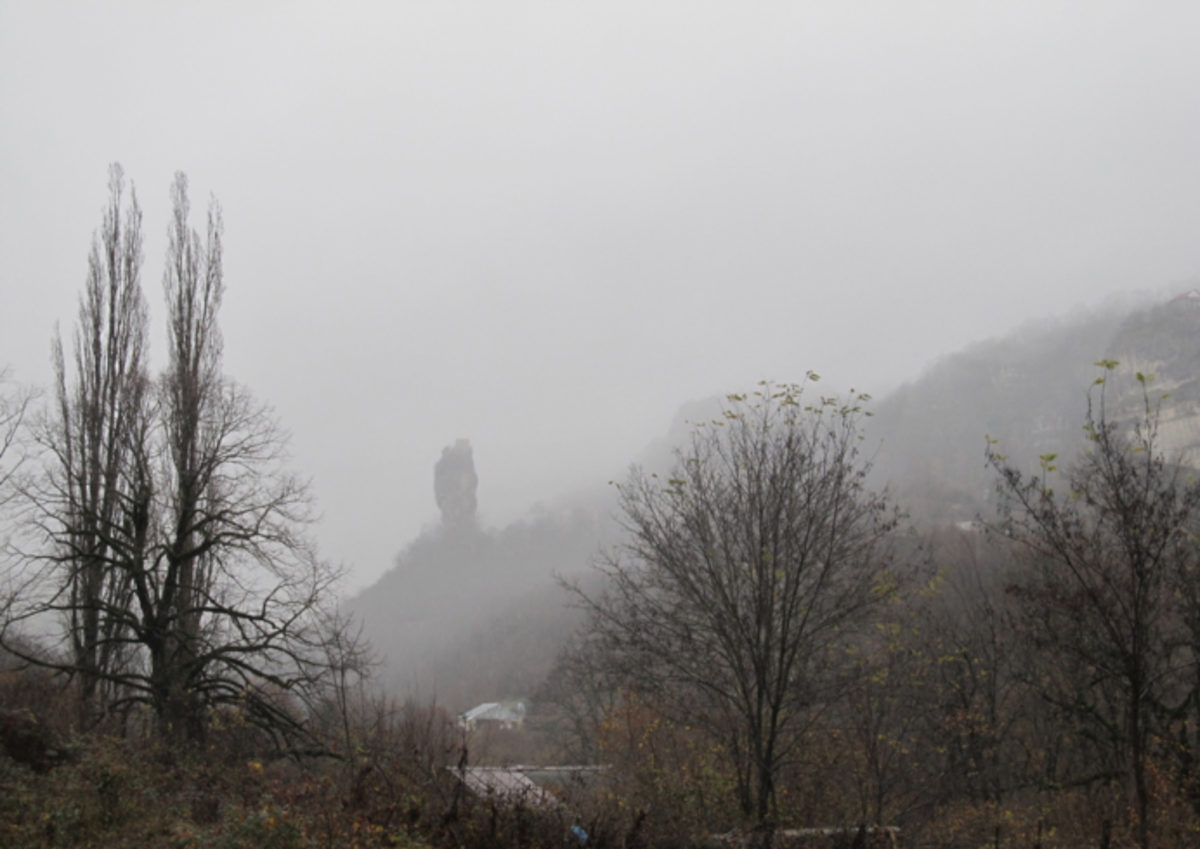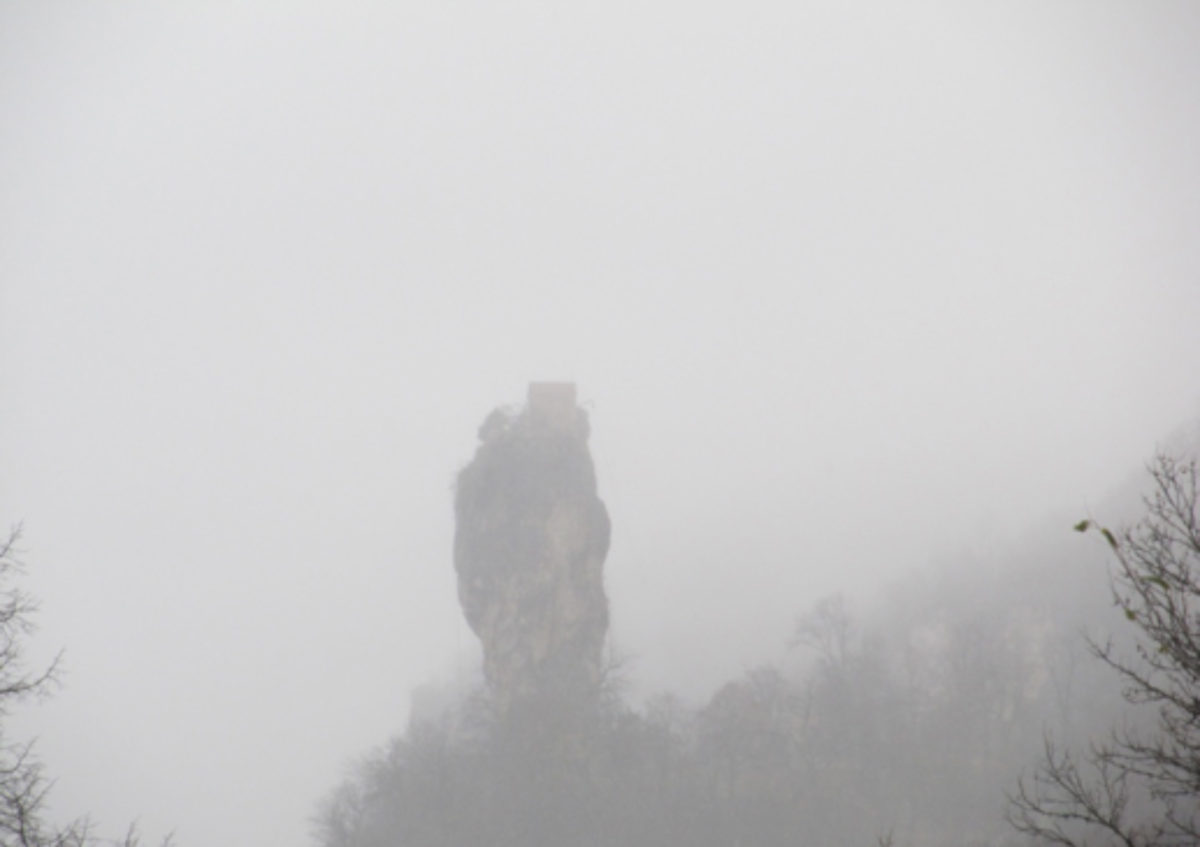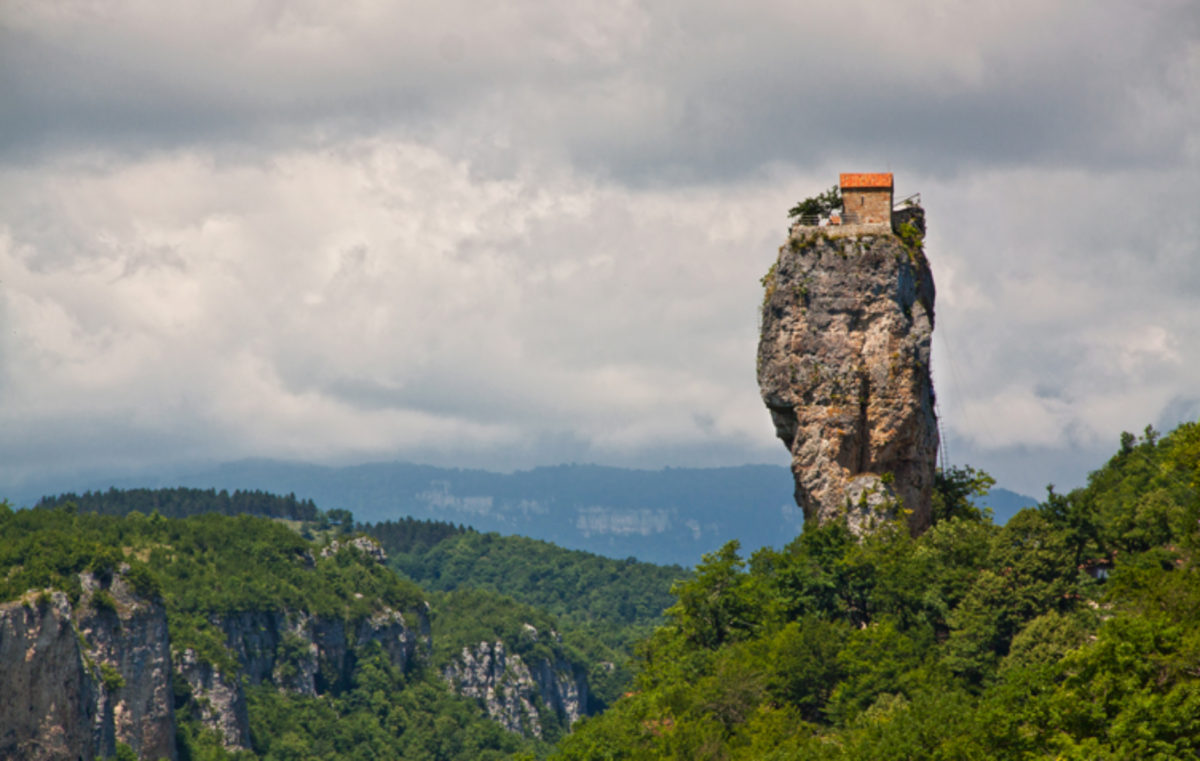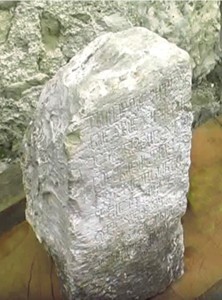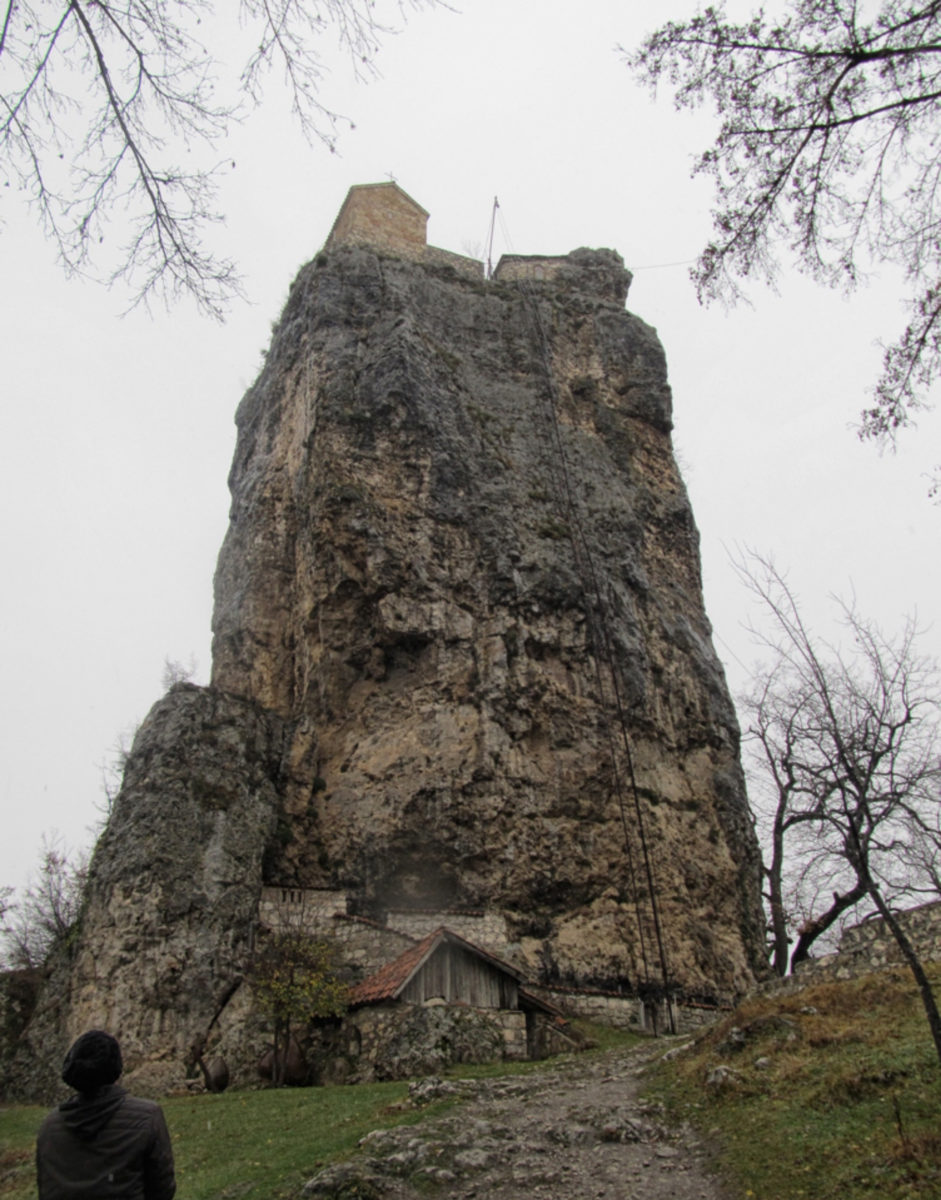Near the town of Chiatura in Gerogia rises a limestone monolith some 130 feet or 40 metres almost vertically up into the sky. It is venerated by locals as the Pillar of Life.
Source: https://upload.wikimedia.org/wikipedia/commons/e/e5/Katskhi_Pillar.jpg
In 1944, a group led by a mountaineer Alexander Japaridze would climb it and in time they would find a small limestone plate paleographically dating back to the 13th Century revealing the name “Georgi” (in asomtavruli, the ancient Georgian script) and refers to the Katshki Pillar as the Pillar of Life. It is believed the limestone plate honours the person responsible for the construction of three hermit cells. Perhaps it referred to Georgi Lasha IV who ruled from 1213 – 1223, who was the only king Georgi who ruled Georgia during the 13th Century. Indeed his portrait along side that of his mother Tamar and grandfather Georgi III is found in both the famous Georgian monasteries of Bethania and Kintsvisi monasteries indicating he was a benefactor to both these institutions. It would appear that the Katshki Pillar was not accessible from around the 13th Century.
Recently a ladder was built which for a while was only open to male visitors. This is no longer open to the public.
The Katshki pillar complex consists of a church dedicated to Saint Maximus the Confessor, it has three hermit cells, a wine cellar, a curtain wall used normally for defence on the top of the pillar and a crypt. At the base of the pillar lies a newly built church of Saint Simeon Stylites along with ruins of an old wall and belfry.
The Katskhi Pillar has never been mentioned in historical literature except for the 18th Century Georgian scholar Prince Vakhushti who noted “There is a rock in a ravine, standing like a pillar, considerably high. There is a small church on top of the rock but nobody is able to ascend it, nor know they how to do that”.
The ruins atop the hill date back to the 9th Century and the limestone asomtavruli inscription suggests the hermitage was extant till the 13th Century. It is surrounded by local legends and there is no way of determining which are fact or just very appealing fiction.
